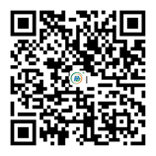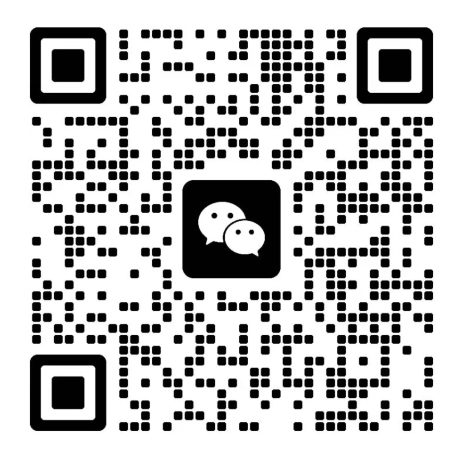一、數顯混凝土回彈儀產品簡介:
混凝土回彈儀是用一彈簧驅動彈擊錘并通過彈擊桿彈擊混凝土表面所產生的瞬時彈性變形的恢復力,使彈擊錘帶動指針彈回并指示出彈回的距離。以回彈值(彈回的距離與沖擊前彈擊錘與彈擊桿的距離之比,按百分比計算)作為混凝土抗壓強度相關的指標之一,來推定混凝土的抗壓強度。輕便(比同類產品省力2/3)、靈活、價廉、不需電源、易掌握、按鈕采用拉伸工藝不易脫落、指針易于調節摩擦力,是適合現場使用的無損檢測的儀器。
the product introduction:
The concrete hammer is a resilience of a momentary elastic deformation generated by a spring-driven hammer and hitting the concrete surface by the impact rod, so that the hammer bounces the pointer back and indicates the distance of the rebound. The rebound strength (the ratio of the bounce distance to the distance between the impact hammer and the impact bar before impact, calculated as a percentage) is one of the indicators related to the compressive strength of the concrete to estimate the compressive strength of the concrete. Lightweight (2/3 less labor-saving than similar products), flexible, inexpensive, no power supply, easy to master, the button is not easy to fall off by the stretching process, and the pointer is easy to adjust the friction. It is the first choice for non-destructive testing for field use.
二、數顯混凝土回彈儀技術參數:
★沖擊功能:2.207J(0.225kgf.m)
★彈擊拉簧鋼度:785N/cm
★彈擊錘沖程:75mm
★指針系統摩擦力:0.5-0.8N
★剛鉆率定平均值:80±2
★一臺主機可配多個機械頭,確保檢測工作順利進行。
★數字直方圖雙重顯示回彈值,更直觀
★與PC機連接,可自動生成報告混凝土回彈儀
Second, technical parameters:
★ Impact function: 2.207J (0.225kgf.m)
★ Strike tension spring steel: 785N/cm
★ Hammer stroke: 75mm
★ Pointer system friction: 0.5-0.8N
★ Roughing rate average: 80±2
★ One main unit can be equipped with multiple mechanical heads to ensure smooth inspection.
★ Digital histogram double display rebound value, more intuitive
★Connected to a PC to automatically generate a report concrete rebounder
三、數顯混凝土回彈儀操作方法:
★一構件混凝土強度檢測可采用兩種方式
1,單個檢測:
適用于單個結構或構件的檢測;
2,批量檢測 適用于在相同的生產工藝條件下,混凝土強度等級相同,原材料、成型工 藝、養護條件基本相同且齡期相近的結構或構件。批量檢測時,抽檢數量不得少于同批構 件總數的 30%且不得少于 10 個。 抽檢構件時, 應遵循隨即抽取zhong 點部位或有代表型的構件。
Third, the method of use:
★ One component concrete strength can be detected in two ways
1, single test:
Suitable for the detection of individual structures or components;
2, batch inspection Applicable to the same production process conditions, the same strength grade of concrete, raw materials, molding process, curing conditions are basically the same and similar age structure or components. In batch inspection, the number of random inspections shall not be less than 30% and not less than 10 of the total number of components in the same batch. When sampling components, follow the key points or representative components.
★二構件的測區符合下列規定
(1)每一結構或構件的測區數不應少于 10 個,對于某一方向尺寸小于 4.5m 且另一方向小 于 0.3m 的構件,其測區數量可適當減少,但不應少于 5 個;
(2)相鄰兩測區的間距應a大不超過 2m,測區離構件端部或施工縫邊緣的距離不大于 0.5m,且不小于 0.2m;
(3)測區應盡量選在使回彈儀處于水平方向檢測混凝土的側面。當不能滿足這一要求時, 可使回彈儀處于非水平方向檢測混凝土的澆筑側面、表面或底面;
(4)測區宜選在構件的兩個對稱可測面上,也可選在一個可測面上,且應分布均勻。在構 構件的重要部位或薄弱部位,必須布置測區,并應避開預埋件;
(5)測區面積不宜大于 0.04m2;
(6)檢測面應為混凝土表面,并應清潔、平整、不應有疏松層、浮漿、油垢及蜂窩、麻面, 必要時可用砂輪清除疏松層和雜物,且不應有殘留的粉末或碎屑;
(7)對彈擊時產生顫動的薄壁或小構件應進行固定。
★The measurement area of the two components meets the following requirements
(1) The number of surveyed areas of each structure or component shall not be less than 10. For components with dimensions less than 4.5m in one direction and less than 0.3m in the other direction, the number of surveyed areas may be appropriately reduced, but not less than 5
(2) The distance between two adjacent test areas shall not exceed 2m at most, and the distance between the test area from the end of the member or the edge of the construction joint shall not exceed 0.5m and shall not be less than 0.2m;
(3) The survey area should be selected as far as possible to make the rebounder in the horizontal direction to detect the side of the concrete. When this requirement is not met, the hammer can be placed in a non-horizontal direction to detect the side, surface or bottom surface of the concrete;
(4) The measurement area should be selected on two symmetrical measurable surfaces of the component, or on a measurable surface, and should be evenly distributed. In the important parts or weak parts of the structural members, the measuring area must be arranged and the embedded parts should be avoided;
(5) The area of the survey area should not be greater than 0.04m2;
(6) The test surface shall be concrete surface, and shall be clean and flat, and shall have no loose layer, floating pulp, grease stain, honeycomb and pockmark. If necessary, the loose layer and debris may be removed by grinding wheel, and there shall be no residual powder. Or debris;
(7) The thin-walled or small members that vibrate during the impact shall be fixed.
★混凝土回彈儀回彈值的測量
1、檢測時,回彈儀的軸線應始終垂直于結構或構件的檢測面,緩慢施壓,準確度數,快速 復位。
2、測點宜在測區內均勻分布,相鄰兩點的凈距離不宜小于 2cm;測點距外露鋼筋、預埋件 的距離不宜小于 3cm。測點不應分布在氣孔或外露石子上,同一點只能彈一次。每一測區 記錄 16 個回彈值,每一測點的回彈值精確到 1。
★Measurement of rebound value of concrete rebound hammer
1. When testing, the axis of the hammer should always be perpendicular to the detection surface of the structure or component, and slowly apply pressure, accuracy, and rapid reset.
2. The measuring points should be evenly distributed in the measuring area. The net distance between two adjacent points should not be less than 2cm; the distance between the measuring points and the exposed steel bars and embedded parts should not be less than 3cm. The measuring points should not be distributed on the stomata or exposed stones, and can only be played once at the same point. 16 rebound values are recorded for each survey area, and the rebound value of each measurement point is accurate to 1.
★混凝土回彈儀碳化深度的測量
1、回彈值測量完畢后,在有代表性的位置上測量混凝土的碳化深度值,測點數不應小于構 件測區數的 30%,取其平均值為該構件每測區的碳化深度值。當碳化深度極差大于 2 時, 應在每一測區測量碳化深度值。
2、碳化深度的測量,可采用適當的工具在測區表面形成直徑 15mm 的孔洞,其深度應大于 混凝土的碳化深度。孔洞中的粉末和碎屑應清除干凈,并不能使用水清洗。用 1%~2%的酒精溶液滴在孔內壁邊緣處,已碳化的混凝土顏色不變,未碳化的混凝土變為紅色,當已碳 化和未碳化界線清楚時,用深度測量工具測量已碳化混凝土的深度,測量不應小于 3 次, 取平均值,精確至 0.5mm。
★Measurement of carbonation depth of concrete rebound
1. After the rebound value is measured, the carbonization depth value of the concrete is measured at a representative position. The number of measurement points should not be less than 30% of the number of parts measured, and the average value is the carbonization depth value of each part of the component. . When the carbonization depth is greater than 2, the carbonization depth value should be measured in each measurement area.
2. For the measurement of carbonization depth, a suitable tool can be used to form a hole with a diameter of 15 mm on the surface of the test area, the depth of which should be greater than the carbonization depth of the concrete. The powder and debris in the holes should be removed and not washed with water. With 1%~2% phenolphthalein alcohol solution dripping at the edge of the inner wall of the hole, the carbonized concrete color is unchanged, the uncarbonized concrete turns red, and when the carbonized and uncarbonized boundary is clear, the carbonization is measured by the depth measuring tool. The depth of concrete shall be measured not less than 3 times and averaged to the nearest 0.5 mm.
★混凝土回彈儀回彈值計算
1、計算測區平均回彈值,應從該測區的 16 個回彈值中剔除 3 個a大值和 3 個a小值,余 下的 10 個回彈值按下式計算: 10 式中Rm — 測區平均回彈值,精確至0.1; Ri — 第i個測點的回彈值。
2、非水平方向時按下式修正: Rm R i 1 10 i Rm Rm Ra 式中Rm — 非水平檢測時測區的平均回彈值,精確至0.1; Ra — 非水平狀態檢測時的回彈修正值,按附表查詢。
3、水平方向檢測混凝土澆筑頂面或底面時按下式修正: t t Rm Rm Ra b b Rm Rm Ra t b 式中Rm、Rm — 水平方向檢測混凝土澆筑表面、底面時的測區回彈值平均值; b Rat 、Ra — 混凝土澆筑表面、底面回彈值的修正值,按附表查詢。
4、 當檢測時回彈儀既非水平狀態有非混凝土的澆筑側面時,應先修正角度,再修正澆筑面。
★ Calculation of rebound value of concrete rebound hammer
1. Calculate the average rebound value of the survey area. The three maximum values and three minimum values should be removed from the 16 rebound values of the survey area. The remaining 10 rebound values are calculated as follows: 10 where Rm is measured The average rebound value of the zone is accurate to 0.1; Ri — the rebound value of the i-th measuring point.
2. In the non-horizontal direction, press the following formula: Rm R i 1 10 i Rm Rm Ra where Rm - the average rebound value of the measurement area when non-level detection is accurate to 0.1; Ra - rebound during non-horizontal state detection Correct the value and query according to the attached table.
3. When the top or bottom of the concrete is poured in the horizontal direction, the following formula is corrected: tt Rm Rm Ra bb Rm Rm Ra tb where Rm, Rm - the average value of the rebound value of the test area when the concrete is poured on the surface and the bottom surface is detected horizontally; b Rat, Ra — The correction value of the concrete pouring surface and the bottom rebound value is inquired according to the attached table.
4. When the rebounder is not in a horizontal state with non-concrete pouring side when testing, the angle should be corrected first, and then the pouring surface should be corrected.
★校驗方法
1,在室溫 20±5℃的條件下進行。
2,率定須的重量及硬度應符合國家標準《回彈儀》GB/T 9138-2015 的要求。洛氏硬度 H RC 為 60±2。
3,將鋼鉆應穩固地平放在剛度大的混凝土實體上。
4, 回彈儀向下彈擊時,彈擊桿應分四次旋轉,每次旋轉 90°。
5,每個方向彈擊三次,取其中a后三次讀數穩定的回彈值進行平均
★Verification method
1. Perform at room temperature 20 ± 5 °C.
2, the required weight and hardness should meet the requirements of the national standard "rebounding instrument" GB/T 9138-2015. Rockwell hardness H RC is 60 ± 2.
3. Place the steel drill firmly on the concrete body with high rigidity.
4. When the hammer rebounds downward, the hammer should be rotated four times, 90° each time.
5, three times in each direction, take the rebound value of the last three readings to average









